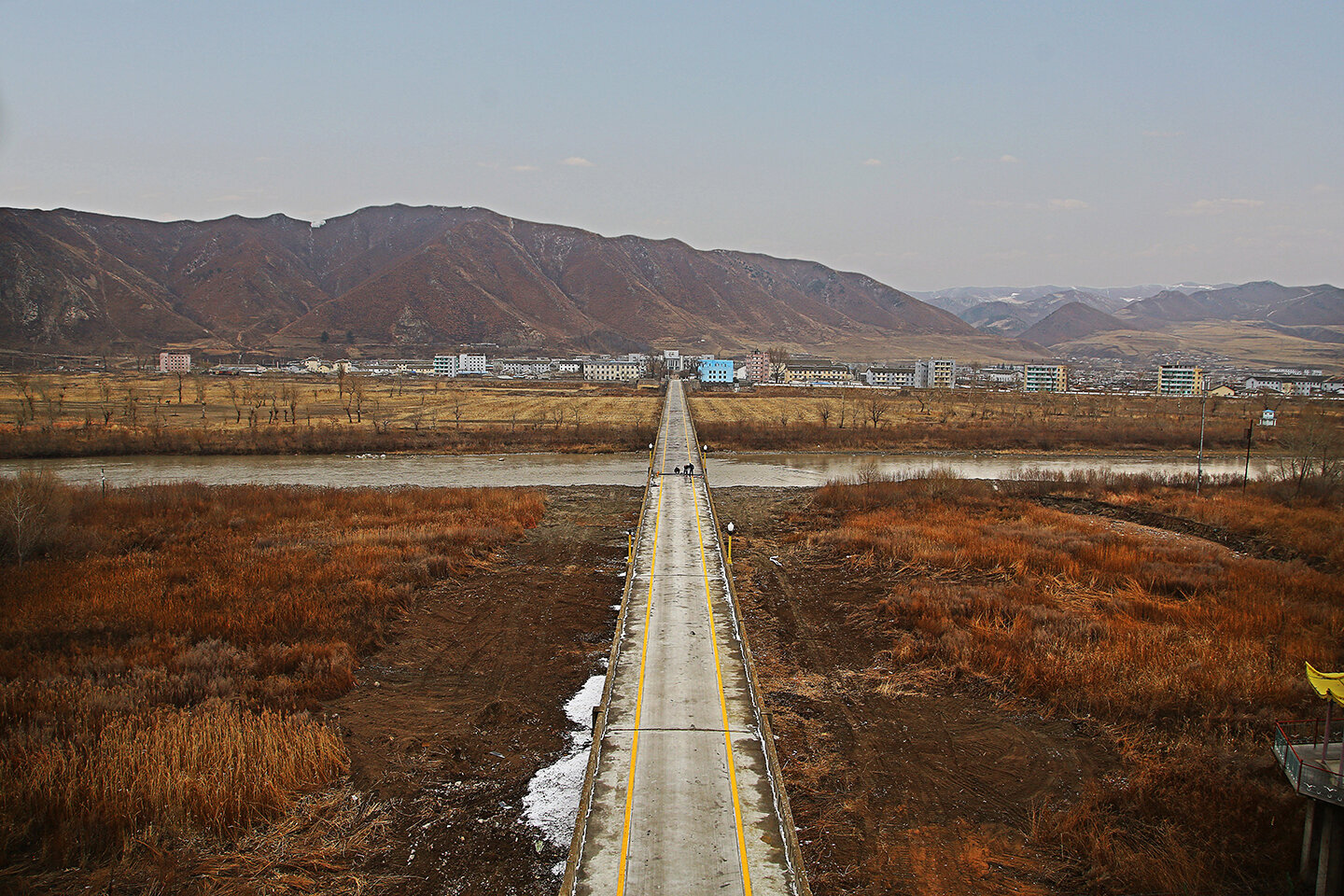China and North Korea
A Population Problem
China’s sheer size is its biggest strength and its biggest weakness. China is the world’s most populous country with 1.4 billion people. The United States by contrast has about 325 million people and is the world’s third-largest country by population.
A mass, popular revolt in China would be overwhelming for the government. The Communist Party knows this. For this reason, the nation’s massive population has been a check on its government. Leaders of the Chinese Communist Party seek to hold on to power for control over its massive population. This has been the driving force of the country’s adoption of elements of capitalism. The contentment of the masses drives the nation’s focus on creating consistent economic growth and increasing living standards for the general public.
In his book, “The Party,” Richard McGregor writes that the Chinese government "is all about joining the highways of globalization, which in turn translates into greater economic efficiencies, higher rates of return, and greater political security." China has a giant pool of cheap labor that is more than willing to take low-wage manufacturing jobs. This is largely due to its massive population. It is a challenge, however, to feed and control a population so large.
China has taken some measures to curb the growth of its population. One of these measures is the infamous One Child Policy, which went into effect in 1979. By law, most Chinese couples could raise more than one child. It is a law that led to the legal, forced abortion of over 400 million babies in a little over three decades.
In 2010, The Economist reported a gender ratio of 275 boys for every 100 girls born in some of China’s provinces. This is almost a three-to-one ratio.
“The cruelest effects of this lopsided gender seesaw will be felt by the involuntary bachelors living in a culture in which marriage is expected,” wrote Susan Scutti in her 2014 report in Newsweek. “These surplus men are sometimes disabled (20 percent), often illiterate, and nearly always the ones who have been left behind to live in rural communities with limited financial prospects.”
This policy has been relaxed several times over the course of decades and most recently in 2015, when the country shifted this law to allow families to raise two children. The severe impact of the One Child Policy, however, is still taking a massive toll on the Chinese population. In 2010, Chinese Academy of Social Sciences estimated that would be 24 million more boys than girls in China by the year 2020. This estimate was far too conservative. As of April 2018, resources indicate that there are over 34 million more Chinese males than females. This is a gender difference larger than the entire population of Malaysia.
Paying the Population Price: Trafficked North Korean Refugees
Since the Great North Korean famine in the 1990s, North Koreans have been fleeing to China in search of relief. Most have found more suffering and abuse.
Approximately 200,000 North Korean refugees currently live in hiding in China, with thousands moving secretly across the border every year. An estimated 70 percent of these refugees are women, who are freer to flee the country without mandatory assignments to the labor force in North Korea. However, once crossing the border between China and North Korea, North Korean refugees labeled “illegal economic migrants” by the Chinese government, are granted no human rights in the country and can be murdered without legal consequence. An astounding 80 percent of the North Korean refugee women in China are therefore captured, threatened, and sold once they have escaped into the country.
Without language abilities, understanding of the terrain, or hope for any intervention, North Korean refugee women are a vulnerable and easily manipulated population for human traffickers. China is a signatory to the 1954 United Nations Convention on Refugees, but refuses to acknowledge North Korean refugees as a population in need.
With the steep gender imbalance in China, the market for purchasable wives is massive in the population of poor or disabled Chinese men who are unable to find a bride. There are some women who attempt to flee abusive spouses, are captured, and sold more than once. Many, who are forced to stay with their husbands after the birth of their children, do so out of an inability to escape from remote regions in China or the ever-searching Chinese authorities who will arrest them and send them back to North Korea.
A Political Problem
The Korean peninsula is a region that is still technically at war. No peace agreement has been signed as fighting between North and South was suspended in 1953. There are about 29,000 US troops and marines currently stationed in South Korea. South Korea adds about 655,000 active troops to this force. The Demilitarized Zone (or DMZ), which splits North and South Korea, is currently the most militarized border in the world.
For China to continue to grow economically, they must maintain stability. What this means is simple: No war.
The Chinese government must keep this military standoff, involving not only the Koreas, but the United states, as far from its borders as possible.
"For the Chinese, stability and the avoidance of war are the top priorities," Daniel Sneider, the associate director for research at Stanford's Asia-Pacific Research Center, informed the Council on Foreign Relations.
Chinese military activity on the border in times of heightened international tension in August 2015 and April 2017 may further indicate that the state is not only preparing to seal its borders but to intervene in any extended conflict that may occur within the DPRK.
In the case of a governmental collapse within North Korea, it is in the best interest of China to be the force of primary intervention and first on-site responder. North Korea is often referred to as China’s buffer state to the capitalistic West, due to the last-set boundaries in the Cold War.
Paying the Political Price: Repatriated North Korean Refugees
China has many interests in North Korea as a strategic partner, none of these interests are in regard to the people who have been fleeing through its borders searching for help. It is, in fact, in the best interests of the Chinese government to reject the North Korean refugees who cross into China, as its desire to appease North Korea. The North Korean territories serve as an effective buffer zone to the American influences in South Korea and allow for Western military forces to be kept far from its borders. For this reason, Chinese authorities actively search for and arrest North Korean refugees to repatriate them to North Korea, even offering monetary rewards to those willing to report refugees to the police. Repatriated refugees can only hope to be branded as traitors to their state and sentenced to labor and starvation in a North Korean prison camp or execution.
The Communist Party in China also has legitimate fears of a humanitarian crisis taking place on its borders. It is estimated that some 300,000 refugees may have sought safety in China during the North Korean famine from 1994 to 1998. China has responded to the growing issue of North Korean refugees with an aggressive and calculated zero-tolerance policy.
With any anxiety of conflict on the Korean Peninsula, the situation for both China and North Korea does grow any simpler. As China takes an apprehensive and defensive stance along its border and the North Korean government intermediately raises the stakes for international tensions, deepening lines in the sand become great trenches that many North Koreans cannot cross – especially those who seek any means of safety possible, even at the risk of their lives on hostile, foreign soil.
In 2017 the Chinese government not only redoubled investment to lock down its border with North Korea along the Tumen River, but expanded its efforts to find North Korean refugees in hiding within its borders. We have heard news of increased police presence from our North Korean refugees further and further from the border in China.
Both the provinces of Jilin and Liaoning, which border North Korea along the Tumen River, are now the location of new brigades of soldiers solely dedicated to border patrol. Since 2013 the military presence in the region has begun conducting drills and exercises to reinforce their effectiveness.
News of new refugee camps being constructed in Changbai County and the Jilin province has begun to circulate as of December 2017, though their purpose is currently unclear. Some analysts have hypothesized that these camps are intended to capture any North Korean refugees who attempt to cross the border en masse in the future.


